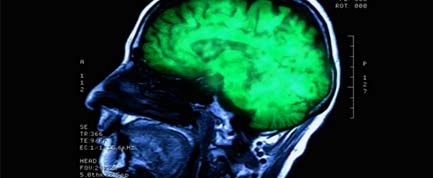New Brain Machine Reads Minds in Modest Breakthrough

A new advance in brain-machine interfaces could enable scientists to one day decode what a person is thinking simply by monitoring brain cell activity.
The finding, detailed in the Oct. 27 issue of the journal Nature, could also help researchers understand how the brain performs its myriad visual tricks, such as recognizing someone in a crowd.
In the research, scientists connect the activity of single neurons to images on a computer screen and demonstrate how a person can fade these images in and out by simply thinking about the pictures. To find these image-specific neurons, the researchers scanned the brains of 12 participants as they looked at hundreds of images.
“Now we actually are able to read people’s mind, on a very small subset of things, but you can still read their minds,” study co-author Moran Cerf, a computational neuroscientist at UCLA, told TechNewsDaily.
So far, the researchers have found four image-specific neurons for each participant. The next step would be to map thousands of these neurons with their related image or concept. For example, the neurons related to thirst and hunger could be decoded to let patients who can’t communicate convey their needs to a caretaker.
“In theory [finding thousands of these neurons] is possible, [but] in practice we’re not going to get there easily,” Cerf said.
The science of mind reading has made some impressive gains in the last few years. Researchers recently discovered how to tell what memory a person was recalling by looking at brain scans, and have speculated that a “mind-reading hat” device could be used to foresee and prevent mental hiccups.
Sign up for the Live Science daily newsletter now
Get the world’s most fascinating discoveries delivered straight to your inbox.
Celeb neurons
The study participants were undergoing special epilepsy treatment where surgeons placed electrodes deep within their brains to locate the region where seizures originated. An additional contact was attached to the electrodes, which was then wired to a computer to measure brain activity of single neurons.
The researchers talked to the patients to determine their interests — favorite music, traveling experiences and so on. They then created a set of hundreds of images related to these topics, which they showed the participant while keeping an eye on their brain activity.
One participant, for example, showed a single-neuron spike for actor Josh Brolin, one for Marilyn Monroe, another for tennis player Venus Williams, and a fourth for Michael Jackson. When that participant thought about Venus Williams, only the Venus Williams neuron would fire.
The participants were then asked to look at a computer screen with hybrid pictures — an overlay of Marilyn Monroe and Venus Williams, for example – and focus on one of those images. Every time the Venus Williams neuron fired, the image of Venus Williams would improve while the image of Marilyn Monroe would fade into the background.
Brain machines
One outcome of this is that, “if the patient learns to control neurons perfectly, instead of having the image appear on the screen you can connect his brain to a cursor,” Cerf said. Marilyn Monroe could make the cursor move up, while thinking of Josh Brolin could move the cursor to the right, for example.
A brain-machine interface is just one possible application of this research, Cerf said. Another would be to resolve a debate about how our brains choose one image over another. For example, how does a mother pick out her child from 20 other children running around a playground?
“There’s a mechanism in your brain that decides to bring this thought up on top in expense of the others,” Cerf said. “We get a first glimpse into this competition.”










